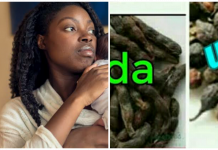Ivermectin (22,23-dihydroavermectin) is a derivative of the macrocyclic lactone avermectin produced by the soil-dwelling actinomycete Streptomyces avermitilis. Ivermectin is active at low doses against a wide range of helminths and ectoparasites.
Brand Names
- Agimect
- Stramectol
- Ascapil
- Averm plus
- Biover
- Ectin
- Ectover
- Evrina
- Ivecop
- Imectin and many more.
Medical uses
It is the drug of choice for the treatment of onchocerciasis (river blindness), strongyloidiasis, cutaneous larva migrans, head lice and scabies. Ivermectin is highly active against microfilariae of the lymphatic filariases but has no macrofilaricidal activity. When ivermectin is used in combination with other agents such as DEC or albendazole for treatment of lymphatic filariasis, synergistic activity is seen. While active against the intestinal helminths Ascaris lumbricoides and Enterobius vermicularis, ivermectin is only variably effective in trichuriasis and is ineffective against hookworms. Widespread use of stramectol for treatment of intestinal nematode infections in sheep and goats has led to the emergence of drug resistance in veterinary practice; this development may portend problems in human medical use.
Mechanism of action of ivermectin
Recent data suggest that stramectol acts by opening the neuromuscular membrane-associated, glutamate-dependent chloride channels. The influx of chloride ions results in hyperpolarization and muscle paralysis—particularly of the nematode pharynx, with consequent blockage of the oral ingestion of nutrients. Because these chloride channels are present only in invertebrates, the paralysis is seen only in the parasite.
Route of administration
Ivermectin is available only as an oral formulation. The drug is highly protein bound; it is almost completely excreted in feces. The effect of food on bioavailability is unknown. It is distributed widely throughout the body; animal studies indicate that it accumulates at the highest concentration in adipose tissue and liver, with little accumulation in the brain. Recently, topical ivermectin was developed to treat a skin condition called rosasea, a type of adult acne.
Dosage
Ivermectin is generally administered as a single dose of 150–200microgram/kg (0.15-0.2mg/kg per dose). In the absence of parasitic infection, the adverse effects of stramectol in therapeutic doses are minimal.
READ ALSO: 10 other drugs for treatment.
Side effects
Adverse effects in patients with filarial infections include fever, myalgia, malaise, lightheadedness, and (occasionally) postural hypotension. The severity of such side effects is related to the intensity of parasite infection, with more symptoms in individuals with a heavy parasite burden. In onchocerciasis, skin edema, pruritus, and mild eye irritation may also occur. The adverse effects are generally self-limiting and only occasionally require symptom-based treatment with antipyretics or antihistamines. More severe complications of ivermectin therapy for onchocerciasis include encephalopathy in patients heavily infected with Loa loa. This reaction has led to the suspension of stramectol distribution for this indication in regions where the two filarial infections are coendemic.
cost of Ivermectin
In the United States, a single dose of Ivermectin cost $38. In Nigeria, the cost is between N2,000 to N3,000 naira.
Sources:
Harrison’s Principle of Internal Medicine.
Read more on Wikipedia.























